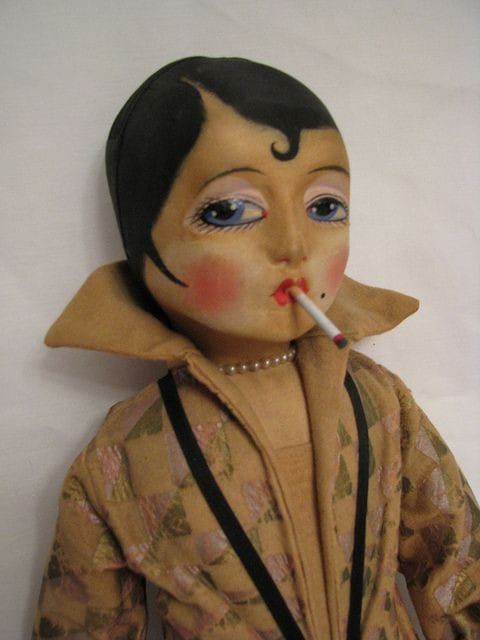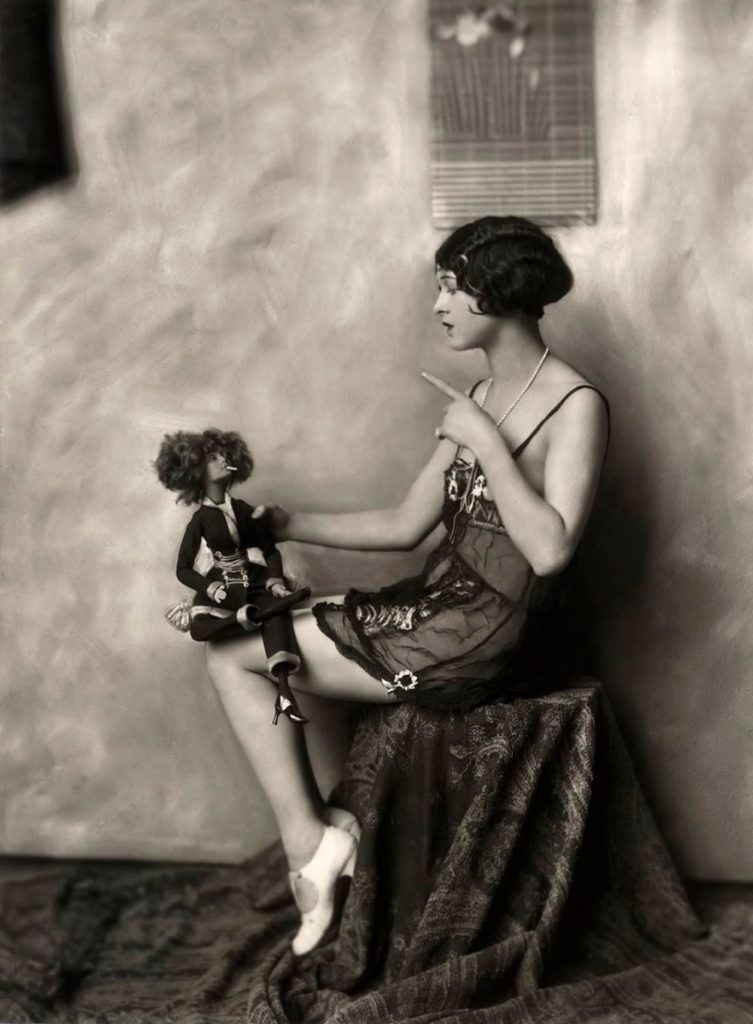The Decidedly Delightful History of 1920s Boudoir Dolls

Quick—what’s your image of a flapper? A young woman with bobbed hair slinking into a speakeasy, throwing back a cocktail and dancing the Charleston?
You’d be right, but did you know she’d likely also be carrying a doll?
It’s true. Along with all the other shenanigans for which the 1920s are now famous, the decade was also seized by an all-out doll craze.
It all started with French designer Paul Poiret. On the eve of the 1920s, models at a Poiret fashion show appeared with “poupees” matched in identical frocks. Fashionable French mesdames were tres enchantees, immediately clamoring for gorgeously dressed dolls of their own. By 1924 the chicest nightclub in Paris was handing out dolls as souvenirs to its chic women patrons, and the doll craze had blazed across the Atlantic and fanned out across America.
Now these dolls—dubbed boudoir or bed dolls—were decidedly not intended for little girls, as evinced by their risqué garb and bad-girl maquillage—low-cut satin dresses, silk stockings, high heels, bobbed hair, rouged cheeks and lipsticked pouts. The naughtiest of them (and my personal favorite) came with cigarettes pursed between their lips.

Women posed their dolls on sofas and beds and took them out on the town—out shopping and to the movies and to bars and dancehalls. It wasn’t long before uber-vixen Marlena Dietrich and the original “It Girl” Clara Bow were appearing on screen with their dolls, creating a new iteration of the boudoir doll, the celebrity doll.
You might think this was all child’s play (or perhaps a bit creepy) until you consider the reaction of men such as Max Schlapp, who blamed boudoir dolls for nothing less than Europe’s low birth rates.
“These exaggerated dolls,” the professor of Neuropathy pronounced, “are the temporary whim of abnormal women. I use the word advisedly, because women who are normal have children and have no time to waste on baubles. The changes in the economic and industrial world in the last 50 years are to blame in a great measure for the emotional instability found in women of today.”
In other words: women should stop playing around with dolls and get busy having babies instead.
The flappers weren’t having it. In the end, only the Depression got young women to put down their dolls, but by then they’d absorbed so many of the dolls’ lessons that there was no looking back.
You see, boudoir dolls embodied all that was titillating and taboo about modernity—fun, frippery, and freedom—and what woman would ever want to grow out of those?


add a comment
+ COMMENTS